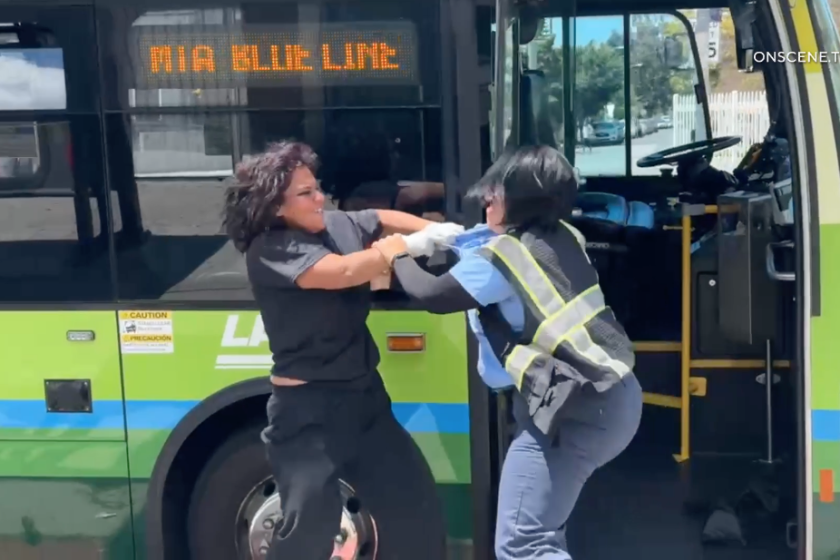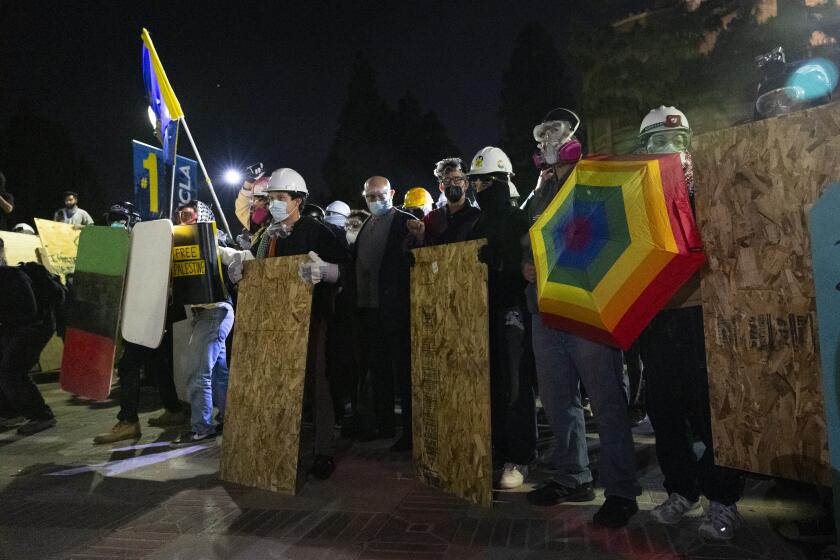Dead end on Olvera Street
If the city of Los Angeles were running a historic park, an annual cost to taxpayers approaching $1 million might be mildly troubling. If it were running a shopping mall, we’d want to know why the city was paying nearly $1 million to subsidize its commercial tenants. Isn’t it supposed to work the other way? And if the city were operating a parking concession and still coming up short, there would be scandal.
Part of what makes El Pueblo de Los Angeles Historical Monument a perpetually thorny problem is that it’s all three: a collection of lucrative parking lots, the historic 1825 plaza and adjacent significant structures, and a combination movie set/tourist attraction/shopping center dreamed up by a San Franciscan in the 1920s. At first a successful blend of history, culture and kitsch, El Pueblo (better known to generations of schoolchildren and tourists by the name of a former back alley, Olvera Street) became so disregarded that a portion of it was blithely lopped off when the Santa Ana Freeway was built in 1949. The county and the state gladly gave up their joint interests in 1990, and the city became the sole landlord.
For nearly two decades now, El Pueblo has been a city department, charged with, among other things, recouping expenses by managing the attraction properly. It has a long way to go, according to an audit by the city controller’s office published last month, just before new Controller Wendy Greuel took office. Chief among the problems: Olvera Street merchants are paying well below market rents. It’s time to update the street, and the city’s relationship with its merchants, by letting the market set the rates.
Some merchants argue that low rents make sense, given the city’s sometimes spotty record as a landlord. But the city’s performance is something the market would take into account. Others argue that their puestos, or market stalls, have been in their families since Olvera Street opened as a Mexican marketplace in 1930, and that their stewardship is what keeps the street from becoming another LA Live or Universal CityWalk. But the city can reset rents and still retain control over the street’s ambience. Longtime merchants have contributed to the monument’s history and culture, but they are not, after all, historic resources that the city has an obligation to subsidize in perpetuity.
Many El Pueblo merchants have cultivated strong ties to Los Angeles’ political leaders, who have been wary of upsetting the status quo. But the price of preserving the status quo soared two years ago, when expenditures exceeded revenues by $921,000, nearly tripling the city’s subsidy. It now falls to Greuel to ensure that the city responds to the audit and that patronage by other elected officials doesn’t get in the way of necessary change.
More to Read
Start your day right
Sign up for Essential California for news, features and recommendations from the L.A. Times and beyond in your inbox six days a week.
You may occasionally receive promotional content from the Los Angeles Times.






